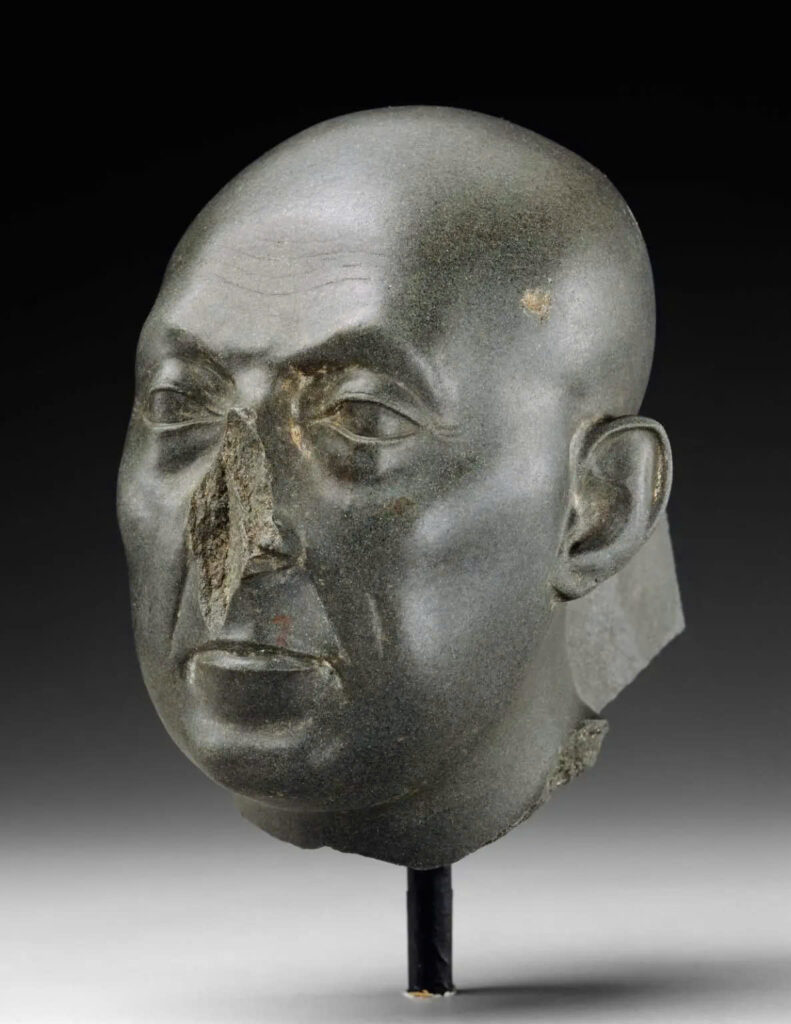An Iconic Portrait of Strength and Individuality

The Boston Green Head, a remarkable sculpture of a priest from Egypt’s Late Period, stands out as one of the most lifelike representations from this era. Its intricate details capture an individual full of character, with wavy lines indicating the furrows of his brow and crow’s feet radiating from the corners of his eyes, adding depth to his expression.
Distinctive Features

The sculpture showcases a pronounced bony ridge on the top of the nose, while deep creases extend from the edges of the nose to the corners of the mouth. The figure’s thin lips and downturned mouth convey a sense of strength and determination. Notably, a slight wart on his left cheek distinguishes this piece from other Egyptian artworks, introducing an element of asymmetry that was cherished by Late Period artists.
A Journey Through History
The head has an intriguing provenance. In the spring of 1857, Napoleon Joseph Charles Paul Bonaparte, a cousin of Emperor Napoleon III, announced his intention to visit Egypt. Inspired by Archduke Maximilian of Austria, who had recently returned from the Nile with an impressive collection of Egyptian artifacts, the prince aimed to surpass him.
To impress his royal guest, Said Pasha, the pro-French viceroy of Egypt, commissioned Auguste Mariette—renowned for discovering the Serapeum, the burial site of the sacred Apis bulls—to assemble a collection of antiquities. To expedite the process, Mariette was instructed to explore the planned itinerary, excavate artifacts, and then rebury them for later rediscovery by the prince.
However, when Prince Plonplon ultimately canceled his trip, he still received a selection of exquisite objects, including the Boston Green Head, as a memento of a journey that never happened.
A Lasting Impact
Despite the cancellation, the efforts made by Mariette and the influence of the prince led to a significant outcome: Mariette was appointed Egypt’s first director of antiquities. This pivotal role marked a new chapter in the care and protection of Egypt’s cultural heritage.

The Boston Green Head, dating to the Late Period around 380-332 BC and crafted from greywacke, measures 10.5 x 8.5 x 11.3 cm (4 1/8 x 3 3/8 x 4 7/16 in.). Now housed in the Museum of Fine Arts, Boston, this sculpture not only exemplifies the artistry of its time but also underscores the rich history of Egypt’s ancient treasures and their journey through time.

